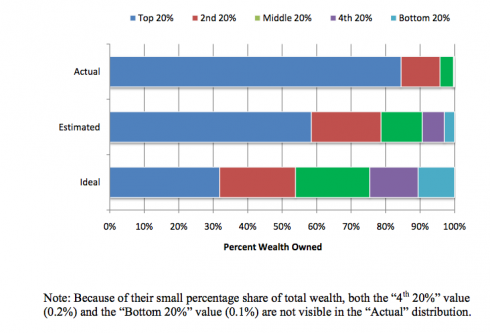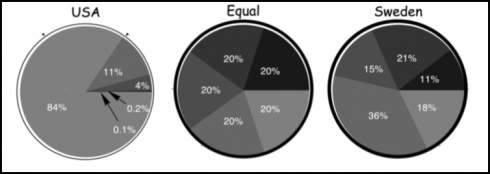One of our economics assignments this cycle asks students to divvy up $200,000 among a group of ten people. One is a divorced mom, another a playboy, a third a bank manager, you get the gist. The purpose is to compare what students think it should be, to what a socialist might believe, to students’ estimation of reality. I’m really curious to see what they come up with.
Michael Norton and Dan Ariely have some actual data on the wealth distribution in the United States that might really challenge some assumptions (Norton and Ariely, 2011 pdf). They asked survey respondents what percentage of wealth they thought was owned by the poorest 20% of U.S. citizens, the next 20% and so on. They also asked what kind of wealth distribution people though would be ideal. Finally, they compared what people thought to what was actually there.

People, apparently, really underestimate the income inequality in the U.S..
A second part of the same study gave people pie charts of wealth distribution in different societies and asked them to pick out which one they would prefer to live in if they were dropped at random into one of these societies. They compared the more socialist-like Sweden, to the U.S., and to a perfectly even distribution. People greatly preferred societies with a more equal sharing of wealth.

I think I’m going to have to modify this assignment to use these graphs. I’ll also have to use their definition of wealth:
Wealth, also known as net worth, is defined as the total value of everything someone owns minus any debt that he or she owes. A person’s net worth includes his or her bank account savings plus the value of other things such as property, stocks, bonds, art, collections, etc., minus the value of things like loans and mortgages.
–Norton and Arieli (2011): Building a Better America – One Wealth Quintile at a Time in Perspectives on Psychological Science